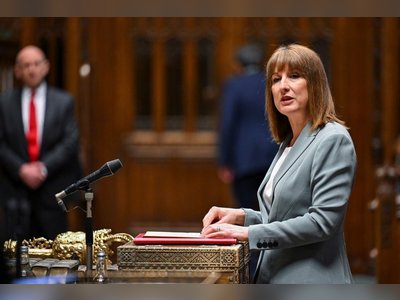UK Launches ‘Golden Age’ of Nuclear with £38 Billion Sizewell C Approval
Government signs final investment decision, takes largest shareholding and deploys regulated-asset model to power six million homes
The UK government has formally approved the final investment decision for the Sizewell C nuclear power station, marking a commitment of approximately £38 billion to deliver clean electricity for the equivalent of six million homes and support up to ten thousand jobs during peak construction.
The deal, signed on 22 July 2025 by the Secretary of State for Energy Security & Net Zero, positions the state as the largest shareholder in the project alongside private investors such as EDF, Centrica, La Caisse and Amber Infrastructure.
The investment underpins what the government is calling a “golden age” for the nuclear sector and forms the backbone of its broader Plan for Change, aimed at boosting domestic energy security, creating jobs and delivering affordable, home-grown power.
In delivering the infrastructure, Sizewell C will be built as a virtual replica of Hinkley Point C with an estimated 20 per cent reduction in construction costs and will operate under the Regulated Asset Base model — a first for UK nuclear development — where costs of construction are recovered via regulated charges on consumer bills during and after build.
Around 70 per cent of construction value will be awarded to British businesses and the National Wealth Fund will play a central role in providing capital.
The project is forecast to generate £2 billion in annual system savings once operational, helping mitigate household power costs.
In parallel, the government is accelerating other parts of its nuclear and clean-energy strategy, including commissioning small modular reactors (SMRs) with the preferred bidder selected, and establishing new planning rules to position the UK as a global leader in fusion energy.
The nuclear regulatory taskforce has also issued an interim report calling for a once-in-a-generation reset of nuclear regulation.
These developments mark the most significant public investment in clean energy in the UK for decades and reflect a shift toward long-term infrastructure investment as a driver of economic growth and energy independence.
The deal, signed on 22 July 2025 by the Secretary of State for Energy Security & Net Zero, positions the state as the largest shareholder in the project alongside private investors such as EDF, Centrica, La Caisse and Amber Infrastructure.
The investment underpins what the government is calling a “golden age” for the nuclear sector and forms the backbone of its broader Plan for Change, aimed at boosting domestic energy security, creating jobs and delivering affordable, home-grown power.
In delivering the infrastructure, Sizewell C will be built as a virtual replica of Hinkley Point C with an estimated 20 per cent reduction in construction costs and will operate under the Regulated Asset Base model — a first for UK nuclear development — where costs of construction are recovered via regulated charges on consumer bills during and after build.
Around 70 per cent of construction value will be awarded to British businesses and the National Wealth Fund will play a central role in providing capital.
The project is forecast to generate £2 billion in annual system savings once operational, helping mitigate household power costs.
In parallel, the government is accelerating other parts of its nuclear and clean-energy strategy, including commissioning small modular reactors (SMRs) with the preferred bidder selected, and establishing new planning rules to position the UK as a global leader in fusion energy.
The nuclear regulatory taskforce has also issued an interim report calling for a once-in-a-generation reset of nuclear regulation.
These developments mark the most significant public investment in clean energy in the UK for decades and reflect a shift toward long-term infrastructure investment as a driver of economic growth and energy independence.










